Powerlifting is a strength sport that focuses on maximizing your performance in three key lifts — the squat, bench press, and deadlift. Whether you’re an aspiring competitor or simply looking to challenge yourself and build functional strength, having a solid understanding of powerlifting techniques and principles is essential. This article covers everything from the history of powerlifting and proper technique to equipment and mental preparation, helping you to build a solid foundation and make the most of your training.
Fundamentals of Powerlifting
Powerlifting is a strength sport that focuses on three main lifts: the squat, bench press, and deadlift. It requires a combination of physical strength, mastering the correct technique, and the mental toughness to push through challenging workouts. This guide will take you through the history of powerlifting, its goals, and the importance of proper form and technique.
History of powerlifting:
Powerlifting traces its roots back to early 20th-century strongman competitions, where athletes showcased their incredible strength in various heavy lifting events. However, the modern sport of powerlifting truly took shape in the 1950s and 1960s. In 1972, the International Powerlifting Federation (IPF) was established, which is still one of the most respected and premier powerlifting organizations today.
Goals of powerlifting:
The primary objective in powerlifting is to lift the maximum weight possible for a single repetition in each of the three disciplines: squat, bench press, and deadlift. Athletes compete in different weight classes to ensure a fair competition, and the heaviest successful lift across all three disciplines is added up to form a lifter’s total. The athlete with the highest total in their respective weight class wins.
Importance of proper form and technique:
Developing and maintaining good form and technique is essential for both improving performance and avoiding injury in powerlifting. Proper form ensures that the weight is lifted safely, efficiently, and optimally, while minimizing the risk of injury to the musculoskeletal system. Furthermore, mastering the correct technique allows the body to utilize the right muscle groups and biomechanical pathways to produce maximum force and power.
Learning the techniques – Squat:
- Setup: Position yourself under the bar, resting it on the upper back muscles. Grasp the bar with a grip that feels comfortable, while keeping your chest up and head in a neutral position. Make sure your feet are shoulder-width apart.
- Descent: Take a deep breath in, brace your core, and bend at the hips and knees to lower the weight until your thighs are at least parallel to the floor. Keep your chest up and the weight balanced on your heels, avoiding any collapse of the knees inward.
- Ascent: Drive back up by extending the hips and knees, exhaling and maintaining tightness in the core. Remember to keep your head in a neutral position and the chest up throughout.
Learning the techniques – Bench Press:
- Setup: Lie on the bench with your eyes below the bar, grip the bar with a grip slightly wider than shoulder-width. Make sure the feet are flat on the ground.
- Descent: Lower the bar to your lower chest, keeping your elbows at around a 75-degree angle relative to your torso. Keep the shoulder blades retracted and the chest elevated.
- Ascent: Push the bar up and slightly back, using your chest muscles and triceps’ strength. Keep your butt and upper back in contact with the bench throughout the movement.
Learning the techniques – Deadlift:
- Setup: Place your feet hip-width apart, and stand close to the bar with shins nearly touching. Bend at the hips and knees, and grip the bar with either an overhand grip or a mixed grip for heavier weights.
- Lift: Take a deep breath, brace your core, and lift the bar by extending the hips and knees until you are standing upright. Make sure to keep the chest up and the back straight throughout the lift.
- Lowering: Reverse the movement by bending at the hips and knees, maintaining a neutral spine while moving the weight back to the ground.
Becoming proficient in powerlifting requires dedication, consistency, and a focus on proper technique. As you progress in your training, it’s crucial to frequently assess and adjust your form to ensure safety and continued progress. Remember to consult with experienced lifters, coaches, or trainers for guidance and feedback as you develop your powerlifting skills. Best of luck on your strength journey!
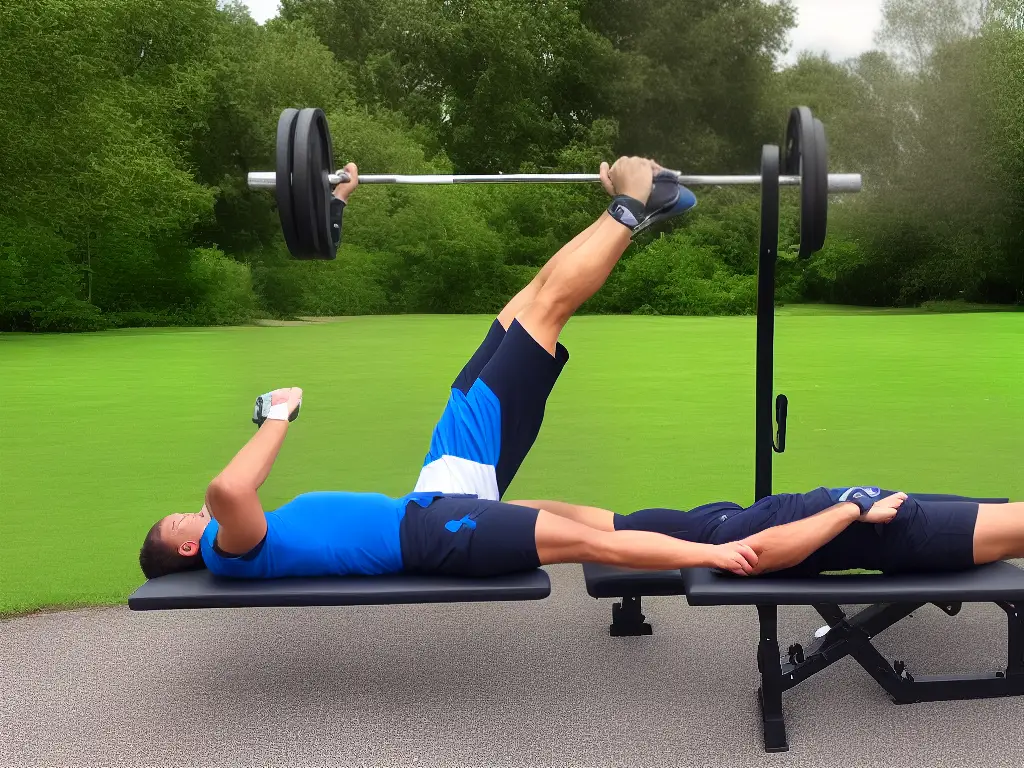
Powerlifting Equipment and Terminology
Powerlifting is a popular sport that tests an individual’s strength in three main lifts: the squat, the bench press, and the deadlift. To improve performance and prevent injury, it’s crucial to understand the essential equipment used in powerlifting and the terminology associated with it. In this guide, we will walk you through the necessary equipment and common terms used in powerlifting training and competition.
Essential Powerlifting Equipment:
- Weightlifting Belt: A weightlifting belt helps provide additional support to the lumbar spine and abdominal area during heavy lifting. The belt’s rigid material encourages the lifter to brace their core properly, which increases intra-abdominal pressure and stabilizes the spine. The most common types of belts are leather and nylon.
- Powerlifting Shoes: Powerlifting shoes have a significantly different design than typical sneakers. These shoes have a solid, flat sole and elevated heel to help lifters maintain better positioning during squats and deadlifts. They also provide better grip and stability on the floor while lifting.
- Knee Sleeves: Knee sleeves are designed to provide compression, warmth, and support to the knee joint during squats and deadlifts. They can be made from materials like neoprene or elastic fabric. Knee sleeves can help improve circulation, reduce inflammation, and provide a sense of stability during training and competition.
- Wrist Wraps: Wrist wraps are used to support the wrists during bench press exercises. They are designed to reduce the risk of wrist injury and help lifters maintain proper wrist alignment during heavy lifts.
- Lifting Chalk: Lifting chalk is used to improve grip strength and reduce slippage during lifts. It is made from magnesium carbonate and is applied to the lifter’s hands before performing heavy deadlifts, bench press, or squat exercises.
Common Powerlifting Terminology:
- Raw Lifting: Raw lifting refers to lifting without the assistance of specialized equipment such as squat suits, bench shirts, and deadlift suits. Raw lifters typically use only the essential equipment listed above.
- Equipped Lifting: Equipped lifting involves using specialized suits that provide additional support and increase the amount of weight lifted. These suits work by creating resistance and storing kinetic energy, which can be used to help move the weight during the lift.
- 1RM (One Rep Max): 1RM is the maximum amount of weight an individual can lift for one repetition with proper form. Training programs often use this measurement as a benchmark to determine appropriate training weights.
- RPE (Rate of Perceived Exertion): RPE is a subjective measure of how hard a lifter feels they are working during a given set or lift. It can be useful for self-regulating intensity and planning training sessions.
- IPF (International Powerlifting Federation): The International Powerlifting Federation is the global governing body for the sport of powerlifting. They regulate competitions, rules, and equipment specifications.
- PR (Personal Record): A personal record, also known as a personal best, is the highest weight lifted, or best performance achieved, by an individual within a specific exercise or competition.
Understanding the essential equipment used in powerlifting and the terminology associated with the sport is crucial for anyone participating in or following powerlifting. With this knowledge, you can ensure that you are adequately prepared and able to understand the discussions within the powerlifting community. Good luck on your powerlifting journey!
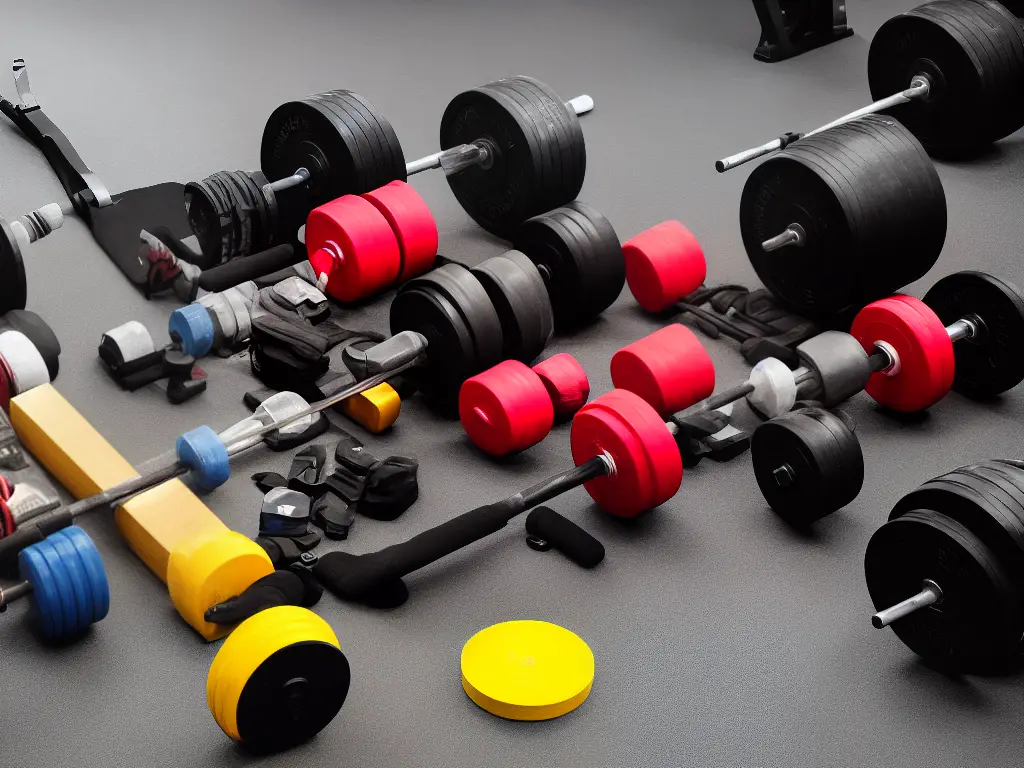
Squat Technique
Powerlifting squats are a fundamental exercise for building overall strength and muscle. They target multiple muscle groups, including the quadriceps, hamstrings, glutes, and lower back. Proper form and technique are essential to ensure maximum benefits and minimize the risk of injury. Follow the steps below to master the squat technique in powerlifting.
1. Warm-up:
- Before performing powerlifting squats, it is essential to warm up your entire body. Do 5-10 minutes of light cardio and dynamic stretches to increase blood flow and flexibility.
2. Setup:
- Stand with your feet shoulder-width apart or slightly wider, with your toes pointing slightly outward.
- Position yourself under the barbell, resting it on your upper back, not your neck.
- Grip the barbell with your hands slightly wider than shoulder-width apart and palms facing forward.
- Engage your core and keep your chest lifted, looking straight ahead or slightly upward.
3. Unracking the bar:
- Take a deep breath, brace your core, and squeeze your shoulder blades together.
- Straighten your legs to lift the bar off the rack.
- Take a few small steps back to clear the rack and establish your starting position.
4. Movement Execution:
- Inhale deeply and tighten your core as you prepare to initiate the squat.
- Lower your body by bending at the hips and knees while keeping your chest lifted and maintaining a neutral spine.
- Continue descending until your thighs are parallel to the ground or lower, depending on your flexibility.
- Pause for a moment at the lowest point before driving through your heels to stand back up.
- Exhale as you push back up, straightening your knees and hips, returning to the starting position.
5. Racking the bar:
- Once you’ve completed your set, carefully approach the squat rack and lower the barbell back onto the supports.
- Ensure the bar is stable and secure before releasing your grip and stepping away.
Tips to Reduce the Risk of Injury:
- Warm up properly: A good warm-up will prepare your body for a more intense exercise, reducing the risk of injury.
- Maintain proper form: Focusing on maintaining good form throughout the movement, especially during the descent, will help protect your joints and reduce the risk of injury.
- Master the bar path: The bar path should be in a straight line during the squat, allowing for optimal force production and safety.
- Strengthen your core: A strong core is essential for maintaining a neutral spine throughout the squat, which is crucial for injury prevention.
- Wear appropriate footwear: For powerlifting squats, use footwear with a flat, non-compressible sole to provide a stable base and proper support.
- Gradually increase weight: Gradually increase the weight you lift over time to avoid overloading your muscles and prevent injury.
Powerlifting squats are a valuable exercise for building overall strength and muscle. By following these instructions and tips, you can ensure proper form, technique, and injury prevention. Remember to always listen to your body, and seek the guidance of a coach or personal trainer if needed. Happy squatting!
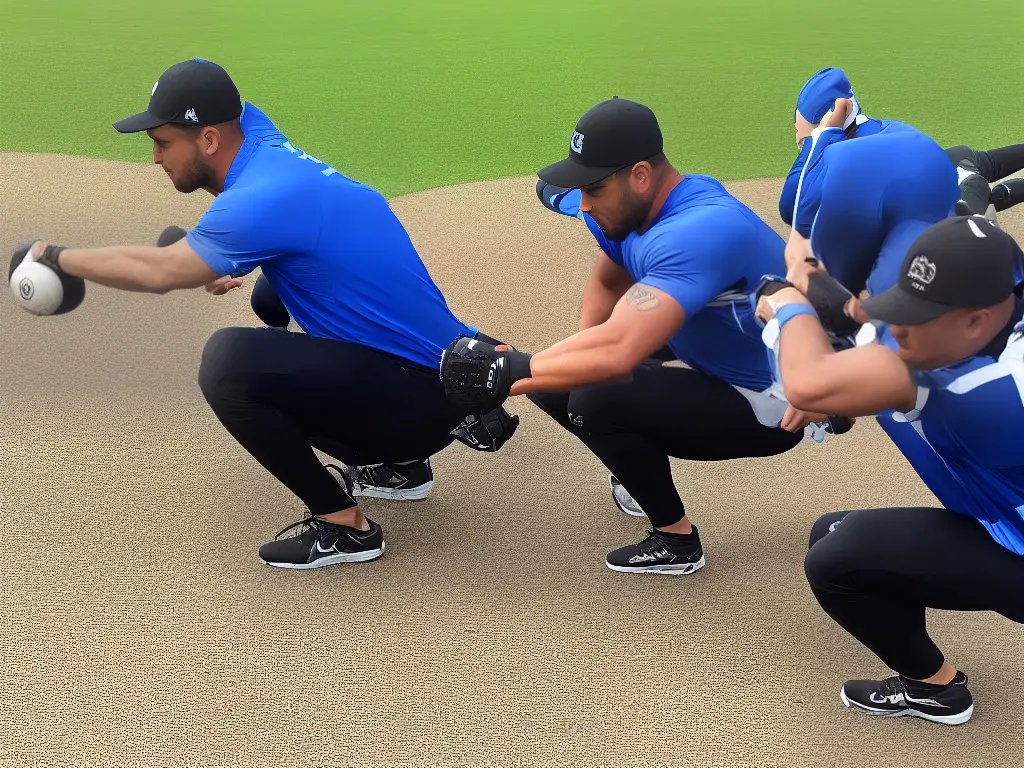
Bench Press Technique
The bench press is a fundamental powerlifting exercise that targets the chest, shoulders, and triceps muscles. To maximize your potential in this lift, it is essential to learn proper form and technique, which will also reduce the risk of injury. Here are step-by-step instructions on how to perform the powerlifting bench press with correct form.
1. Set up:
- Lay down on the bench with your eyes aligned directly below the barbell. This will allow for a proper and safe liftoff.
- Position your feet flat on the floor and slightly wider than shoulder-width apart, providing a stable base.
- Arch your lower back slightly, keeping your shoulder blades retracted and firmly planted on the bench. This positioning creates a stable foundation and increases power during the press.
2. Grip:
- Gripping the barbell correctly is crucial for shoulder stability and force transfer from the chest and triceps.
- Place your hands on the barbell with a grip slightly wider than shoulder-width.
- Wrap your thumbs around the barbell for a secure grip. Many powerlifters prefer a “false grip” (thumbless grip), but this can be risky and is not recommended for beginners.
- Ensure your wrists are straight and aligned with your forearms.
3. Bar path:
- Take a deep breath, engage your core, and unrack the bar with the assistance of a spotter or with a controlled self-liftoff.
- Lower the barbell to your lower chest, just below the nipple line, while keeping your elbows at a 45-degree angle from your body.
- Let the bar gently touch your chest without bouncing. A slight pause may be required in powerlifting competitions to demonstrate control.
4. Press and lockout:
- Drive the barbell upward in a slightly diagonal path towards your face, using the power generated from your chest, shoulders, and triceps.
- Keep your elbows underneath the bar and your wrists aligned with your forearms throughout the movement.
- Fully extend your arms at the top of the lift, achieving a locked-out position with shoulders and triceps engaged.
- Exhale as you reach the lockout to assist with stability.
Additional Tips:
- Warm-up thoroughly before attempting heavy bench presses, including dynamic stretching and lighter bench press sets.
- Gradually increase the weight on the bar as you practice, ensuring that you prioritize maintaining proper form and technique over lifting heavier loads.
- Always utilize a spotter when performing heavy bench press sets to ensure safety.
- Incorporate assistance exercises into your training program to address any weaknesses, such as close-grip bench press for tricep strength or paused bench press for increasing strength off the chest.
By consistently practicing proper form and bench press technique, you’ll be on your way to increasing your powerlifting performance and minimizing the risk of injury. Remember, practice patience and prioritize technique over lifting heavy weights initially – your strength gains will follow.
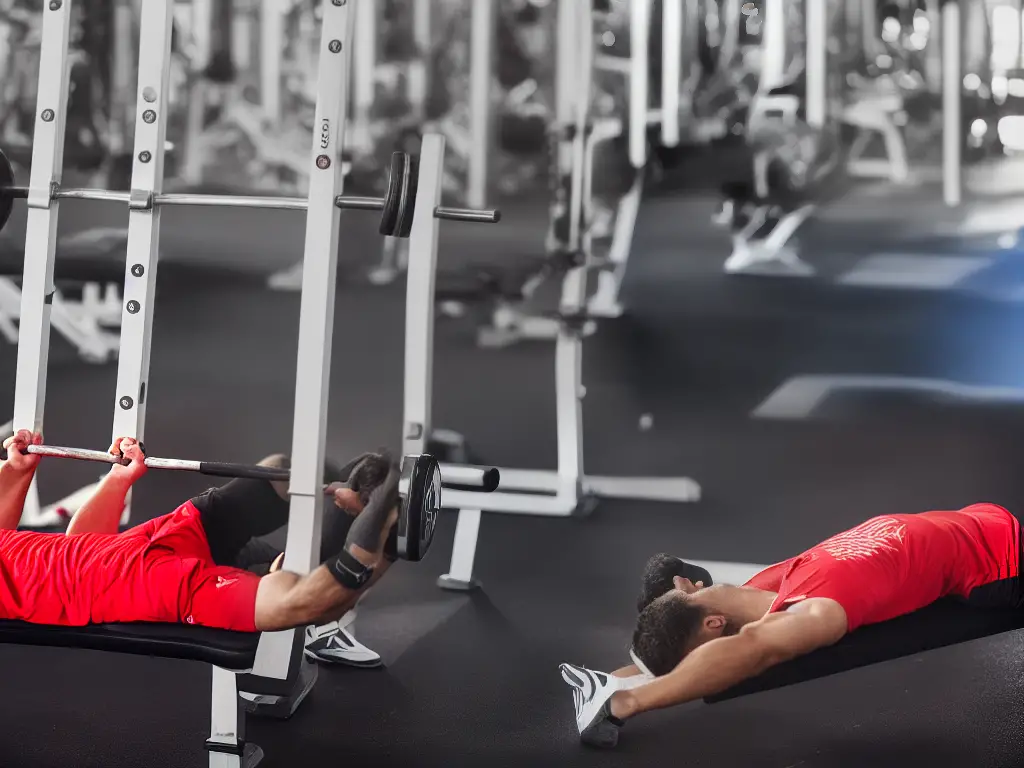
Deadlift Technique
The deadlift is a fundamental powerlifting exercise that targets multiple muscle groups, including the lower back, hamstrings, and glutes. It is important to understand and apply the correct form and technique for both conventional and sumo deadlifts to ensure effective training and prevent injuries.
Conventional Deadlift Technique:
-
Setup:
-
Stand with your feet hip-width apart, facing the barbell.
-
Position your midfoot under the bar, about 1 inch away from your shins.
-
Keep your chest up and back straight while bending at the hips and slightly at the knees.
-
Grip the bar with both hands outside of your legs, using either a double overhand grip or a mixed grip (one hand over, one hand under).
-
-
Lift the bar:
-
Engage your core, lats, and glutes before initiating the lift.
-
Begin the movement by driving your heels into the ground and pushing your hips forward.
-
Keep the bar as close to your body as possible, maintaining a straight bar path.
-
As the bar passes your knees, continue to extend your hips forward.
-
Stand up straight, fully extending your hips, and locking out your knees.
-
-
Lower the bar:
-
Begin by slightly bending your knees and pushing your hips back.
-
Maintaining a straight back, lower the barbell down your thighs.
-
Once the bar passes your knees, bend your knees further, and bring the barbell back to the ground.
-
-
Tips to remember:
-
Keep your back straight throughout the entire movement.
-
Drive through your heels, not your toes.
-
Engage your core and lats throughout the lift.
-
Keep your head in a neutral position, looking slightly forward and down during setup.
-
Sumo Deadlift Technique:
-
Setup:
-
Stand with your feet wider than hip-width apart, toes pointing slightly outward.
-
Position your midfoot under the bar, about 1 inch away from your shins.
-
Squat down, keeping your back straight and chest up, until you can grip the bar with both hands inside of your legs.
-
Use either a double overhand grip or a mixed grip, gripping the bar slightly narrower than your shoulders.
-
-
Lift the bar:
-
Engage your core, lats, and glutes before initiating the lift.
-
Begin the movement by driving your heels into the ground and pushing your hips forward.
-
Keep your knees in line with your toes throughout the lift.
-
Keep the bar as close to your body as possible, maintaining a straight bar path.
-
As the bar passes your knees, continue to extend your hips forward.
-
Stand up straight, fully extending your hips, and locking out your knees.
-
-
Lower the bar:
-
Begin by slightly bending your knees and pushing your hips back.
-
Maintaining a straight back, lower the bar down your thighs.
-
Once the bar passes your knees, bend your knees further, and bring the barbell back to the ground.
-
-
Tips to remember:
-
Maintain a wide stance throughout the lift.
-
Engage your core and lats during the entire movement to maintain stability.
-
Keep your back straight, and avoid rounding your lower back.
-
Maintain a neutral head position, looking slightly forward and down during setup.
-
Always practice proper technique and start with lighter weights to build up your strength and form before attempting heavier lifts. If you are unsure about your technique or need personalized guidance, consider working with a certified personal trainer or coach experienced in powerlifting.
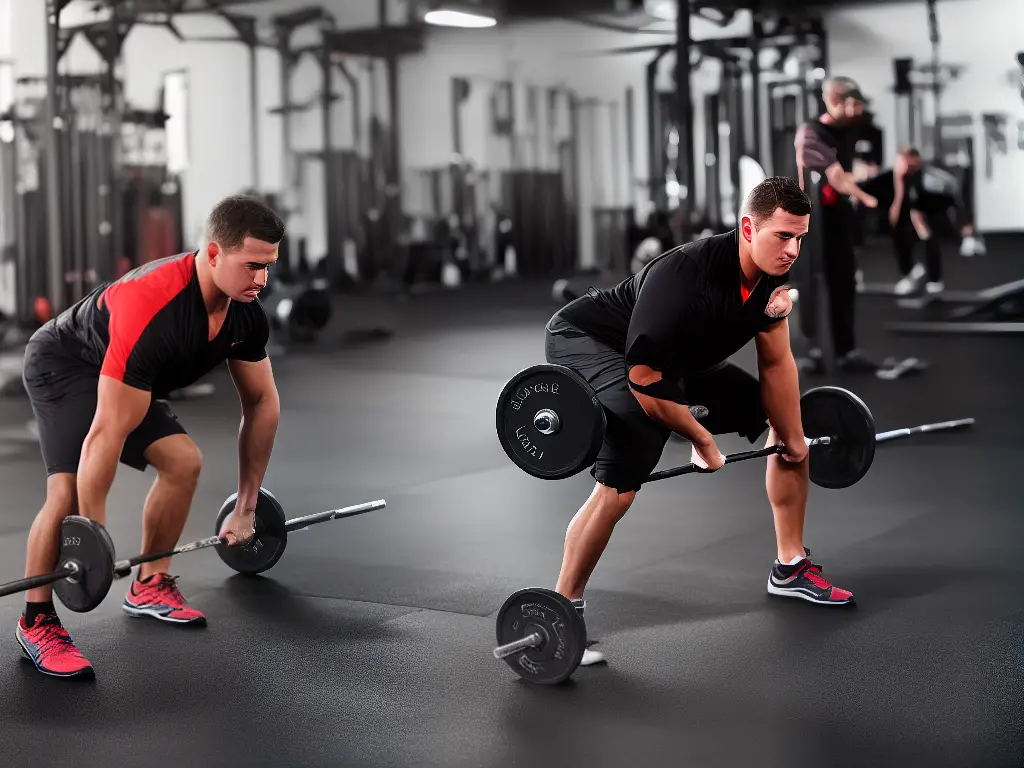
Accessory Exercises
Powerlifting is a sport that tests your maximal strength in three primary lifts: the squat, bench press, and deadlift. To excel in these lifts and increase overall strength, powerlifters should incorporate accessory exercises into their training routines. Accessory exercises are supplemental movements that focus on specific muscle groups and techniques to improve weaknesses and boost performance in the main lifts. This article will cover essential accessory exercises and their benefits, providing a jumping-off point for incorporating them into your powerlifting regimen.
1. Pause Squats:
Purpose: Improve squat strength, build control, and enhance technique.
Instructions: A. Begin by setting up in the squat rack as you would for a regular squat. B. Descend into the squat, maintaining an upright chest, a tight core, and knees tracking over your toes. C. Once you reach the bottom position, pause for a 2-3 count, maintaining tension and control throughout your body. D. Drive through your heels to return to the starting position, fully extending your hips at the top.
2. Romanian Deadlifts (RDLs):
Purpose: Strengthen the posterior chain (hamstrings and glutes) and lower back, improving deadlift lockout and overall pulling power.
Instructions: Please refer to the text above for the instructions.
3. Close-Grip Bench Press:
Purpose: Strengthen triceps and lockout strength in the bench press.
Instructions: Please refer to the text above for the instructions.
4. Pull-Ups:
Purpose: Increase upper back strength and stability, improve grip strength, and create a stronger base for squat, bench press, and deadlift.
Instructions: Please refer to the text above for the instructions.
5. Face Pulls:
Purpose: Strengthen the rear deltoids and upper back, promoting better shoulder health and stability for all powerlifting lifts.
Instructions: Please refer to the text above for the instructions.
Conclusion: Including accessory exercises into your powerlifting routine can make a substantial impact on your strength and performance in the main lifts. Addressing muscular imbalances and weak points in your technique will contribute to more efficient and powerful lifting. Remember to focus on quality movement, adjust weights and sets to best fit your training goals, and always prioritize safety and proper form.
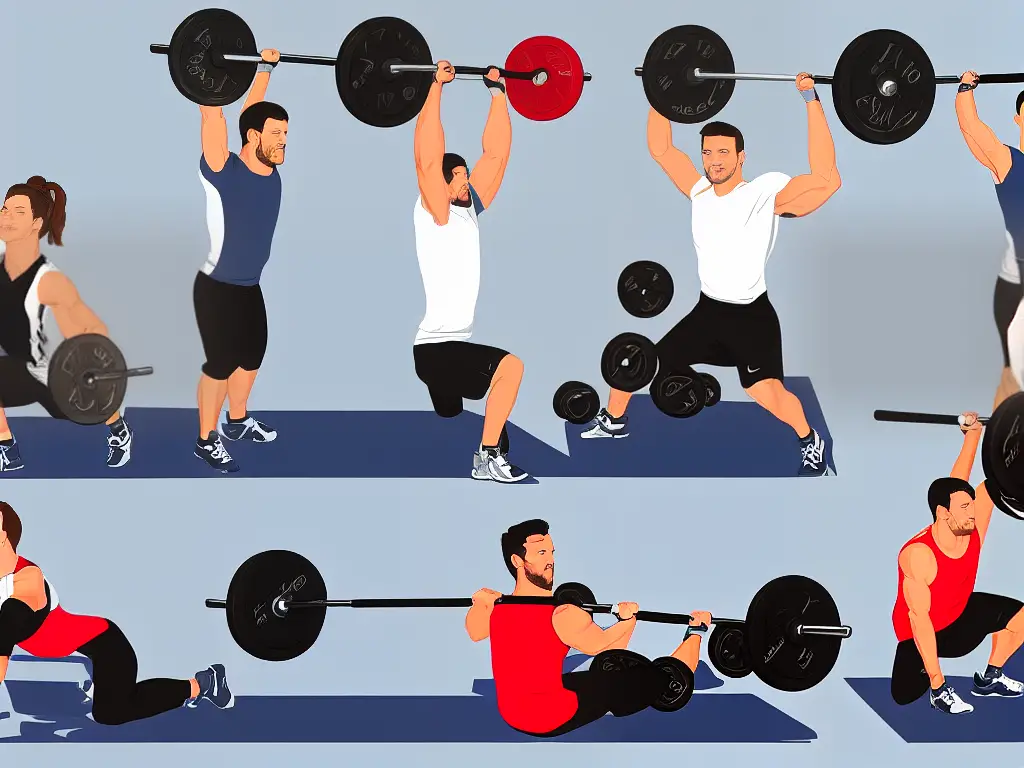
Planning and Programming
Powerlifting is a sport that focuses on three main lifts: the squat, the bench press, and the deadlift. The goal of powerlifting is to lift the heaviest possible weights in each of these three exercises. To achieve this, you need a solid plan and an effective programming strategy. In this guide, we will discuss powerlifting programming strategies, including periodization, intensity, volume, and frequency, to help you maximize your powerlifting results.
1. Periodization
A. Definition:
Periodization is the systematic planning of training phases designed to ensure peak performance at a specific time. This means breaking down your training cycle into smaller segments called “mesocycles,” each with a different training focus.
B. Types of periodization:
There are several types of periodization strategies, but the most common and effective for powerlifting are linear periodization and undulating periodization.
- i. Linear periodization:
Linear periodization involves gradually increasing intensity while decreasing volume over the course of a training cycle. This can be done on a weekly, monthly, or even yearly basis. Linear periodization has been proven effective for novice to intermediate lifters. - ii. Undulating periodization:
Undulating periodization involves varying intensity and volume within a single training week or mesocycle. This method is beneficial for more advanced lifters who have reached a plateau using linear periodization.
2. Intensity
A. Definition:
Intensity refers to the percentage of your one-rep max (1RM) weight used during lifting. The appropriate intensity depends on the phase of periodization and your experience level.
B. Guidelines:
i. During high-intensity phases, aim for approximately 85-95% of your 1RM for fewer reps.
ii. During low-intensity phases, use 60-75% of your 1RM with higher reps to build a strength foundation and improve technique.
3. Volume
A. Definition:
Volume refers to the total workload during a training session, typically calculated as the number of sets multiplied by the number of reps.
B. Guidelines:
i. During high-volume phases, perform more sets with fewer reps to focus on hypertrophy and building muscle mass.
ii. During low-volume phases, prioritize heavier weights and fewer total reps to focus on pure strength training.
4. Frequency
A. Definition:
Frequency refers to the number of training sessions per week for a specific lift.
B. Guidelines:
i. Beginners: Train each of the main lifts 2-3 times per week to improve technique and build strength.
ii. Intermediate/Advanced: Train each main lift 1-2 times per week, with adequate recovery time to prevent overtraining and injury.
5. Sample programming schedule combining periodization, intensity, volume, and frequency:
- – Week 1-4: Linear periodization with high volume and low intensity.
- – Week 5-8: Linear periodization with moderate volume and moderate intensity.
- – Week 9-12: Linear periodization with low volume and high intensity.
- – Week 13: Deload week to recover and prepare for a testing week or competition.
- – Week 14: Testing week or competition where you attempt new 1RM lifts.
By understanding and implementing periodization, intensity, volume, and frequency in your powerlifting programming, you can maximize your results and achieve the greatest possible gains in strength and muscle mass. Remember to always consult a coach or experienced lifter if you need guidance or have questions about your specific training plan. Happy lifting!
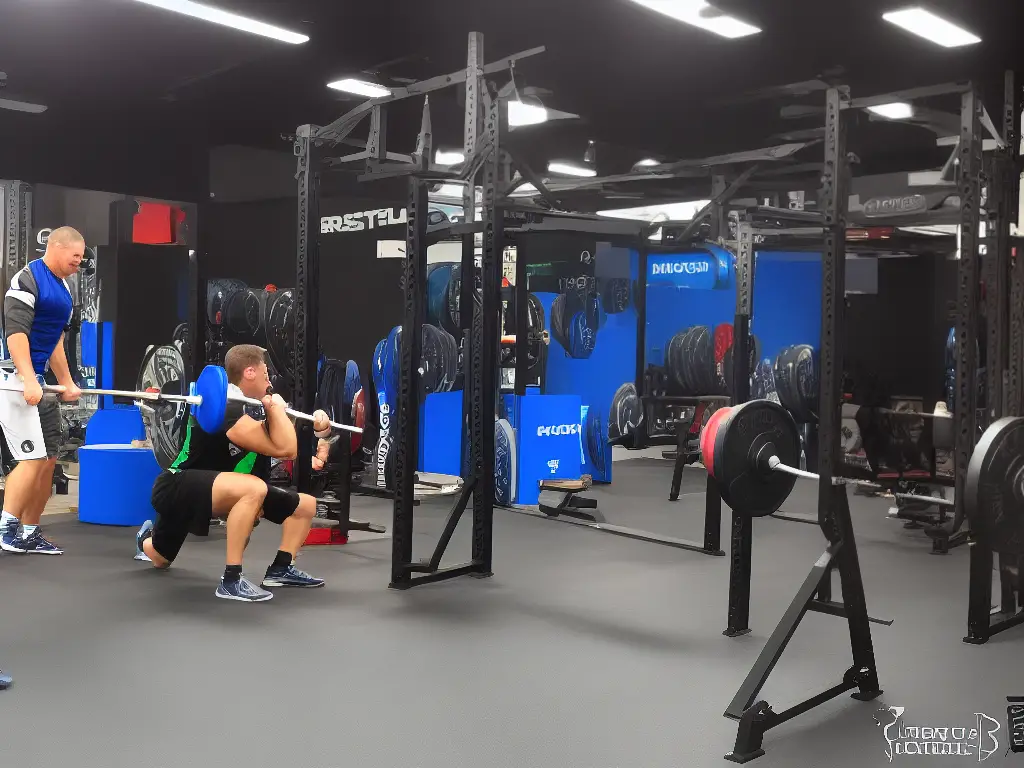
Nutrition and Recovery
Powerlifting is a physically demanding sport that requires immense strength, concentration, and determination. However, if you are serious about excelling in powerlifting, you must understand the importance of nutrition and recovery in optimizing your performance and preventing injuries.
Nutrition for Powerlifters:
- Determine your calorie needs: Proper nutrition demands that you fuel your body with enough energy to power you through intense workouts and aid in muscle building. You can calculate your daily calorie needs using online calculators or by consulting a trained sports nutritionist who can guide you further according to your age, weight, height, and activity level.
- Consume sufficient protein: As a powerlifter, your body requires more protein than an average person to facilitate muscle growth and recovery. Consume around 1.2-1.7 grams of protein per kilogram of body weight daily in the form of diverse sources such as lean meat, poultry, fish, dairy products, and protein supplements.
- Prioritize complex carbohydrates: Complex carbohydrates offer sustained energy release, which is essential for maintaining optimal performance during powerlifting workouts. Focus on including whole grains, vegetables, and legumes in your diet to meet your energy demands.
- Don’t neglect healthy fats: Include unsaturated fats such as fatty fish, olive oil, avocados, and nuts. Moderate your saturated fat intake.
- Stay hydrated: Adequate hydration is critical for optimal performance and recovery. Consume at least 3-4 liters of water daily, including during and after workouts. Adjust this amount according to factors such as sweat rate and training intensity.
- Consider supplements: Consult a sports nutritionist to understand which supplements would be suitable for you. Creatine and beta-alanine are examples of supplements that can optimize muscle strength and power output and improve endurance.
Recovery for Powerlifters:
- Prioritize sleep: Get 7-9 hours of sleep per night, maintaining a consistent schedule. Sleep in a dark, quiet, and comfortable environment, and establish a consistent bedtime routine for optimal mental and physical recovery.
- Implement active recovery: Perform low-intensity exercises like walking, cycling, and swimming on rest days for better blood flow and muscle recovery.
- Stretch and foam roll: Practice static and dynamic stretches, and foam roll to address tight spots in your muscles, reduce muscle tightness, and improve your range of motion to prevent injuries.
- Manage stress: Practice stress management techniques like meditation, deep breathing exercises, or spending time in nature to maintain optimal mental health, reduce stress, and improve recovery.
- Listen to your body: Pay attention to your body’s signals. If you experience excessive fatigue, severe muscle soreness, or declining performance, modify your training temporarily or alter your recovery plan accordingly.
The essential powerlifting nutrition tips and critical recovery methods discussed in this guide will significantly improve your performance and reduce the risk of injuries. Therefore, it is crucial to prioritize proper nutrition and recovery along with your training and techniques to excel in powerlifting. Invest in your nutrition and recovery today to unleash your true powerlifting potential.

Mental Preparation and Competing
Powerlifting is as much a mental challenge as it is a physical one. Having a strong mentality, discipline, and focus can make a significant difference in your performance. Here are some strategies for mental preparation and techniques to approach competition day in powerlifting.
Mental Preparation:
-
Set clear and realistic goals: Before beginning your training, set specific, measurable, and achievable goals. This will help you stay motivated and focused during your training sessions. Keep a log or journal to track your progress and make any necessary adjustments.
-
Visualization: Regularly visualize yourself performing a successful lift with proper form and technique. This mental rehearsal can help improve your confidence and reduce anxiety before a competition. Spend about 10-15 minutes each day practicing visualization.
-
Develop a pre-competition routine: Routines can help alleviate pre-competition stress and anxiety. Establish a consistent routine that you perform in the days leading up to a competition. This can include a specific warm-up, listening to motivating music, or repeating positive affirmations.
-
Stay positive and focused: Maintain a positive attitude during your training and competition preparation. Focus on your goals, visualize your success, and remind yourself of your achievements. Try to eliminate negative self-talk and replace it with positive affirmations and self-encouragement.
-
Practice mindfulness and relaxation techniques: Engage in regular mindfulness practices, such as meditation or deep breathing exercises, to help you stay calm and focused during your training and on competition day. This can help you develop better concentration and mental resilience.
Competing:
-
Plan your attempts wisely: Choose your opening lifts based on your current abilities and what you’ve achieved in training. A conservative opener will build your confidence and allow you to gauge how you feel on competition day. For subsequent attempts, select weights that challenge you but are still within your capabilities.
-
Stick to your plan: Trust your training and follow your pre-determined attempts. Avoid making last-minute changes based on how other competitors are performing or how the crowd reacts. Stay focused on your individual goals and progress.
-
Manage competition anxiety: Keep your pre-competition routine intact and practice relaxation techniques to manage any nerves or anxiety that may arise. Take deep breaths, listen to calming music, or use positive affirmations to stay centered and focused.
-
Warm-up properly: Ensure a thorough warm-up, including dynamic stretching, mobility exercises, and lighter lifts. This will help prepare your muscles and joints for the heavier lifts during competition.
-
Stay hydrated and fueled: Consume adequate water, electrolytes, and nutrients to keep yourself energized and focused during the competition. Plan your meals and snacks accordingly to avoid digestive issues or feeling too full during your lifts.
-
Maintain a strong mindset during competition: Stay focused and determined throughout the entire event. Take one lift at a time and treat each attempt as an opportunity to perform at your best. Remember, you have trained for this moment, and your success is a result of your hard work and dedication.
In summary, mental preparation and developing a solid competition strategy are crucial for powerlifting success. Utilize visualization, goal-setting, positive self-talk, relaxation techniques, and a consistent pre-competition routine to ensure you’re mentally prepared for the challenge. On competition day, confidently execute your lifts, trust your training, and remain focused on your individual goals.
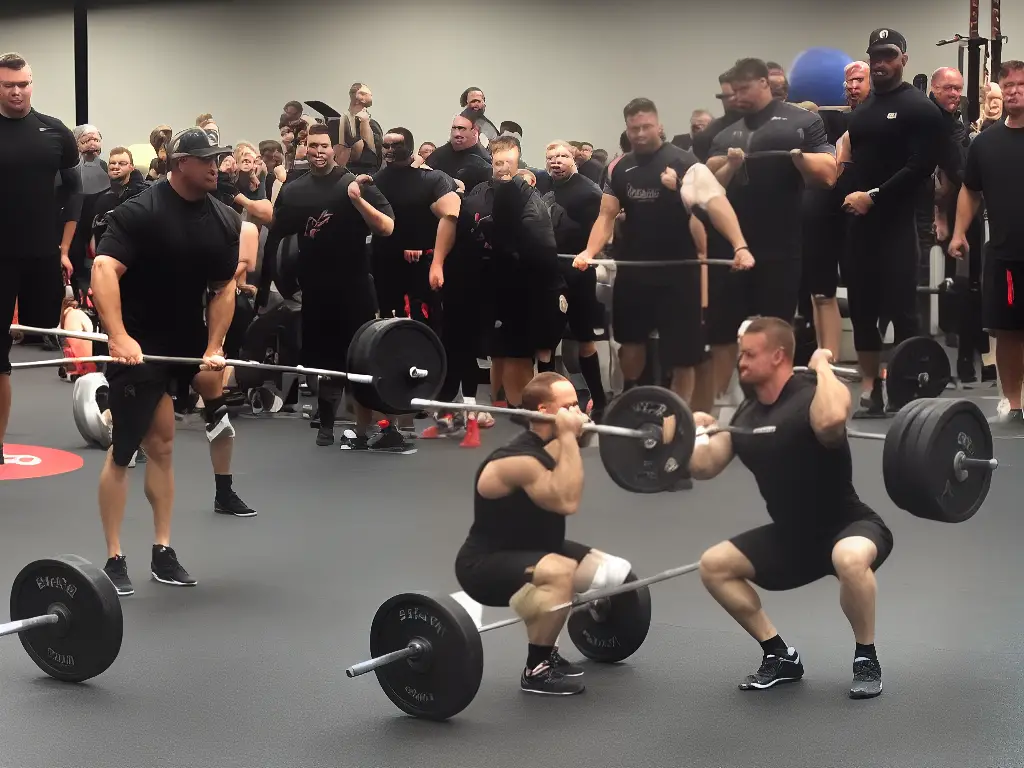
Armed with the knowledge and techniques found throughout this article, you’ll be well-equipped to embark on your powerlifting journey. Remember that consistency, dedication, and proper technique are critical to your success. As you continue to develop your skills and strength, you’ll discover the true potential of this exciting and challenging sport. Happy lifting!